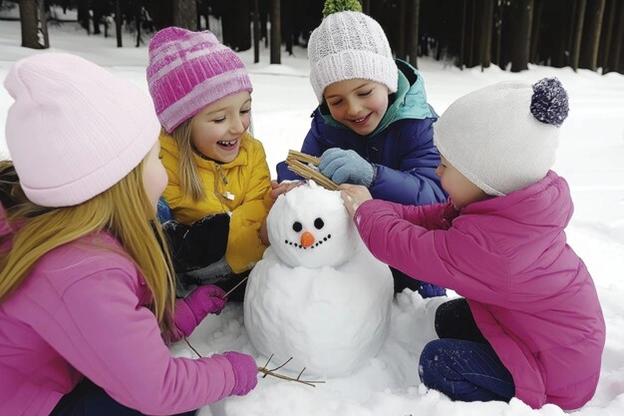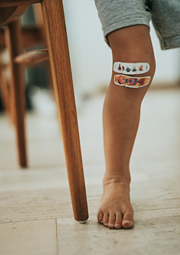Fun and Productive Activities for Kids on a Snow Day
A snow day is an unexpected delight for children, offering respite from routine and an opportunity to appreciate winter’s magnificence. While the urge to remain confined indoors clutching screens is understandable, the outdoors beckons with wonders untold. From snow angels to snowmen, sledding to snowball fights, the choices for fun are boundless beneath the white sky.
Yet a snow day’s magic can quickly dissolve if direction or design is lacking. Whether your ambition is to ignite youthful activity in the icy air or nurture inquisitive minds with a warm heart, innovative inspiration ensures this bonus of leisure leaves young and old with joyous memories to last in their hearts ‘til spring.
Outdoor Activities: Enjoy the Winter Wonderland
The snow drifting down outside creates a dazzling landscape inviting further exploration. For those still with energy to spend, the wintry weather serves as motivation to bundle up tightly and continue the outdoor fun with games or crafts suited to the conditions.
Build a Snow Creation
Let your kids unleash their imagination by building something extraordinary from snow days. Go beyond the traditional snowman and try crafting snow animals, castles, or even a mini snow village. Challenge them to decorate their creations with natural items like twigs, pinecones, and stones.

Sledding and Snow Races
If you have a sled or even a sturdy piece of cardboard, head to a nearby hill for some exhilarating fun. Add a playful twist by organizing snow races or a relay. This helps burn energy and keeps the kids laughing.
Snow Art
Turn the snow into a canvas by giving kids spray bottles filled with water and food coloring. They can paint vibrant designs on the snow, creating colorful patterns or drawing shapes. It’s an easy way to blend art and outdoor play.
Science Experiments
Snow is a great resource for simple science experiments:
- Melting Snow: Fill jars with snow and measure how much water it turns into. It’s a fun way to introduce kids to the water cycle.
- Salt and Ice: Experiment with sprinkling salt on ice to watch how it melts faster and discuss why this happens.
- Snowflake Study: Use a magnifying glass to examine snowflakes up close and marvel at their unique designs.
Reading and Storytelling
Encourage kids to curl up with a book or write their own snow day stories. They can illustrate their tales and share them with the family. For younger children, a read-aloud session can be a wonderful bonding activity.
Puzzles and Board Games
Engage your kids with puzzles or family board games. These activities are perfect for building problem-solving skills and encouraging collaboration.
Indoor Activities: Stay Warm and Creative
Once the winter air has nipped at their ears and noses turning them red, it’s time for the merrymakers to head indoors from their romp. Within warm walls, activities can be planned to stoke their creative minds and fuel their inquisitive spirits.
Arts and Crafts
When playtime calls, discover new ways to unleash your children’s imaginative spirits with materials already at hand. Folding intricate snowflake patterns with paper requires patience but yields one-of-a-kind creations. For magic around the house, gather jars, glitter, and tiny toys and get whisked away into homemade snow globes. And for those quieter moments, spread out coloring books filled with images of snowy scenery and let markers do their work.
Baking Sweet Treats
Transforming your kitchen into a cozy bakery would allow curious minds to unleash their potential. Gather the little ones in the warm kitchen to unleash their creativity through the sweet art of baking.
Arrange an assortment of ingredients and leave the rest to their imagination as they mix up batches of cookies, cupcakes, or fudgy brownies. Once the treats come out of the oven, really let the fun begin with an explosion of frostings, sprinkles, and candies of all colors.
For nights that call for simpler pleasures, congregate by the crackling fireplace with mugs of rich hot chocolate and engage their minds with stories of winter wonderlands.
Then permit each individual to express themselves through customizing their drink with marshmallows, whipped cream, or candy canes melted into the creamy cocoa.
Build a Blanket Fort
There is a certain magic felt when building a secret sanctuary within the walls of blankets and pillows. Once the fort is complete, you have constructed a world for them to get lost in the pages of books, embark on adventures through board games, or go on a journey through the worlds of family-friendly films, all while savoring snatched moments of coziness.
Wind Down with Family Time
Snow days are the perfect opportunity to reconnect as a family. After a day full of fun and learning, wind down together with some quiet activities:
- Movie Night: Pick a family favorite, grab some snacks, and cozy up on the couch.
- Story Sharing: Reflect on the day and let each child share their favorite part.
- Evening Treats: End the day with warm drinks and a small treat to celebrate the memories made.
Conclusion
A powder day presents families with opportunities beyond reprieve from routine. White landscapes offer stages for crafting moments treasured, arenas for joined revelry. Resourceful plans unite boisterous adventures without and imaginative works within, may also integrate studies. Strongholds and sculptures of snow alongside sweet mixtures and examinations delightful yield delight for all.
Keys to contentment on such a day consist in devising pursuits that engross and bond as they deter laziness. Therefore, when flaky flakes transform terrain to tranquil, employ these prompts to forge recollections to relive with your whole household for winters to come.



 Virtual friendships introduce children to a world where emotional communication happens differently than in the so-called real world.
Virtual friendships introduce children to a world where emotional communication happens differently than in the so-called real world.





